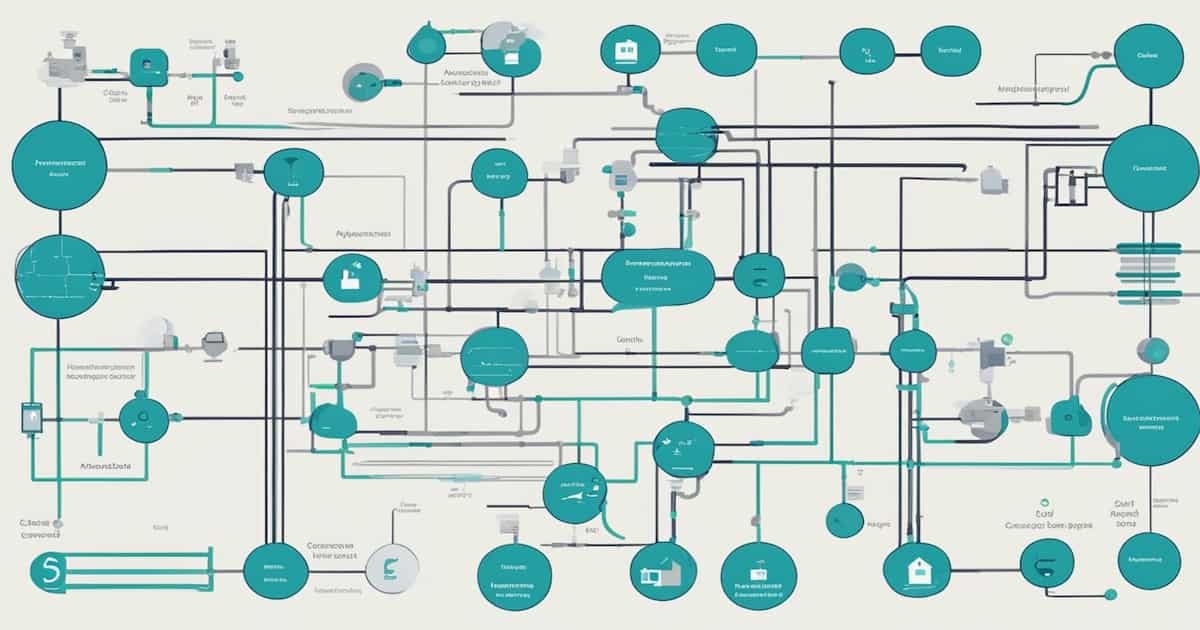
When faced with a difficult decision, it can be tempting to jump to a quick resolution without considering all of the potential outcomes. However, taking the time to play out the decision to its logical conclusion can help you make a more informed choice. This technique, known as “Let’s Play That Through To The End,” involves weighing the costs and benefits of each potential outcome before making a final decision.
One way to approach this technique is through a circuit of analysis, which involves breaking down the decision into its component parts and examining each one individually. This can help you identify potential risks and rewards associated with each option, allowing you to make a more informed choice. Additionally, understanding the basic circuit in our brain that drives decision-making can help you better understand the process and make more thoughtful choices.
Of course, there are always competing interests at play when making a decision, and it can be difficult to balance all of these factors. However, by taking the time to carefully consider each option and weigh the potential costs and benefits, you can make a more informed choice that takes into account all of the relevant factors. So next time you’re faced with a tough decision, take a step back and play it through to the end before making your choice.
Overview of the “Let’s Play That Through To The End” Technique
The “Let’s Play That Through To The End” technique is a powerful decision-making tool that helps you evaluate the potential outcomes of your choices. This technique is based on the idea that we can make better decisions if we take the time to think through the consequences of our actions.
The technique involves imagining the potential outcomes of a decision and then evaluating them based on a cost/benefit analysis. This analysis considers the potential costs and benefits of each outcome, as well as the likelihood of each outcome occurring.
To use this technique effectively, you must understand the circuit of analysis in our brain. This circuit involves the prefrontal cortex, which is responsible for decision-making, and the limbic system, which is responsible for emotions. By understanding this circuit, you can learn to balance your emotions with rational thinking and make better decisions.
Competing interests can also affect our decision-making. These interests can include personal values, social pressure, and financial considerations. By understanding these competing interests, you can make more informed decisions that align with your values and goals.
In summary, the “Let’s Play That Through To The End” technique is a valuable tool for making better decisions. By considering the potential outcomes of a decision and evaluating them based on a cost/benefit analysis, you can make more informed choices that align with your values and goals.
The Basic Circuit in Our Brain

Neurological Foundations
The human brain is a complex organ that is responsible for a wide range of functions, including decision-making. The decision-making process involves a basic circuit in our brain that is responsible for processing information and making choices. This circuit is made up of several different regions of the brain, each with a specific function.
The prefrontal cortex is one of the most important regions of the brain involved in decision-making. This area is responsible for planning, organizing, and making decisions based on information from other parts of the brain. The prefrontal cortex is also responsible for inhibiting impulsive behavior and regulating emotions.
Another important region of the brain involved in decision-making is the amygdala. This area is responsible for processing emotions, particularly fear and anxiety. When we encounter a potential threat, the amygdala sends signals to the prefrontal cortex, which then decides how to respond.
Decision-Making Processes
The decision-making process involves several different steps, each of which is controlled by a specific region of the brain. The first step is perception, which involves gathering information about the environment. This information is processed by the sensory cortex, which sends signals to the prefrontal cortex.
The next step is attention, which involves focusing on relevant information and filtering out distractions. This process is controlled by the parietal cortex, which is responsible for spatial awareness and attention.
Once we have gathered and filtered information, we must evaluate it and make a decision. This process is controlled by the prefrontal cortex, which weighs the potential costs and benefits of each option. The prefrontal cortex also considers our past experiences and personal values when making decisions.
Finally, once a decision has been made, we must take action. This process is controlled by the motor cortex, which sends signals to the muscles to carry out the chosen action.
Overall, the decision-making process is a complex one that involves multiple regions of the brain working together. By understanding the basic circuit in our brain and how it processes information, we can make better decisions and achieve our goals more effectively.
Circuit of Analysis
When using the “Let’s Play That Through to the End” technique, you are essentially using a circuit of analysis in your brain. This circuit involves identifying key variables and evaluating possible outcomes to help you make decisions.
Identifying Key Variables
The first step in this circuit is to identify the key variables involved in the decision you are making. This may include factors such as time, money, resources, and potential risks or benefits. By identifying these variables, you can begin to see the potential outcomes of your decision more clearly.
One way to identify key variables is to create a list or table that outlines all of the factors involved in the decision. This can help you organize your thoughts and ensure that you are considering all relevant information.
Evaluating Possible Outcomes
Once you have identified the key variables, the next step is to evaluate the possible outcomes of your decision. This involves considering the various scenarios that could result from each possible choice.
To evaluate outcomes, you may want to use a decision matrix or decision tree. These tools can help you visualize the potential outcomes of each choice and weigh the pros and cons of each option.
It is important to consider both short-term and long-term outcomes when evaluating possible outcomes. This can help you make a decision that aligns with your goals and values.
By using this circuit of analysis, you can make more informed decisions and feel confident in the choices you make.
Cost/Benefit Analysis
When it comes to making decisions, the cost/benefit analysis is a useful technique to help you weigh the potential gains and losses of a particular course of action. This analysis involves identifying the costs and benefits of a decision, and then comparing them to determine whether the benefits outweigh the costs.
Assessing Potential Gains
To assess potential gains, you need to identify the positive outcomes that could result from a particular decision. This could include increased revenue, improved productivity, or enhanced reputation. It’s important to consider both short-term and long-term gains, as well as any potential secondary benefits that may arise.
One way to assess potential gains is to create a table that lists all the potential benefits, along with an estimate of their value. This can help you to see the overall picture and make a more informed decision.
Weighing Potential Losses
To weigh potential losses, you need to identify the negative outcomes that could result from a particular decision. This could include increased costs, decreased productivity, or damaged reputation. It’s important to consider both short-term and long-term losses, as well as any potential secondary losses that may arise.
One way to weigh potential losses is to create a list that outlines all the potential costs, along with an estimate of their impact. This can help you to understand the potential risks and make a more informed decision.
By using the cost/benefit analysis, you can make more informed decisions that are based on a clear understanding of the potential gains and losses. This technique can be particularly useful when you are faced with complex decisions that involve competing interests and uncertain outcomes.
Competing Interests in Decision-Making

When making decisions, we often have competing interests that can make it challenging to determine the best course of action. By understanding these competing interests, we can make more informed decisions that align with our goals and values.
Personal vs. Professional Interests
One common competing interest is the tension between personal and professional interests. Personal interests may include things like spending time with family or pursuing hobbies, while professional interests may include things like advancing your career or meeting work deadlines.
To balance these interests, it can be helpful to prioritize your goals and values. Consider what is most important to you in the short and long term. You may also need to communicate with others, such as your boss or family members, to ensure that your decisions align with their expectations and needs.
Short-Term vs. Long-Term Benefits
Another competing interest is the tension between short-term and long-term benefits. Short-term benefits may include things like immediate gratification or relief from stress, while long-term benefits may include things like financial stability or improved health.
To balance these interests, it can be helpful to consider the potential consequences of your decisions. Ask yourself what the short-term and long-term benefits and drawbacks are for each option. You may also want to seek advice from others or use tools like cost/benefit analysis to help you weigh your options.
Overall, by understanding and balancing competing interests in decision-making, you can make more informed and effective choices that align with your goals and values.
Applying the Technique in Various Scenarios
Business Strategy
When it comes to making decisions in the business world, the Let’s Play That Through To The End technique can be a valuable tool. By considering the potential outcomes and consequences of different options, you can make a more informed decision that takes into account both short-term and long-term effects.
One way to apply this technique in a business setting is to create a cost/benefit analysis. This involves identifying the potential costs and benefits of each option and weighing them against each other. You can use a table or spreadsheet to organize this information and make it easier to compare.
Another approach is to use a circuit of analysis. This involves breaking down the decision into smaller parts and analyzing each part separately. For example, if you’re deciding whether to launch a new product, you might analyze the market demand, production costs, and potential revenue separately before considering how they all fit together.
Personal Life Choices
The Let’s Play That Through To The End technique can also be useful when making personal life choices. Whether you’re deciding where to live, what career to pursue, or who to marry, considering the potential outcomes and consequences can help you make a decision that aligns with your values and goals.
One way to apply this technique in your personal life is to use a basic circuit in our brain. This involves identifying the different factors that are important to you and evaluating how each option aligns with those factors. For example, if you’re deciding where to live, you might consider factors like proximity to family, job opportunities, and cost of living before making a decision.
Another approach is to consider competing interests. This involves identifying the different factors that are pulling you in different directions and evaluating which ones are most important to you. For example, if you’re deciding whether to take a job that pays well but requires long hours, you might consider how important work-life balance is to you before making a decision.
Conclusion
In conclusion, the Let’s Play That Through To The End technique can be a useful tool in decision making. By conducting a cost/benefit analysis and considering competing interests, you can make informed decisions that align with your goals and values.
The basic circuit in our brain that is responsible for decision making can be influenced by emotions and biases. However, by using the Circuit of Analysis and consciously considering all relevant factors, you can mitigate the impact of these influences and make rational decisions.
It is important to note that the Let’s Play That Through To The End technique is not a one-size-fits-all solution. Depending on the situation, other decision-making techniques may be more appropriate. However, by incorporating this technique into your decision-making process, you can increase the likelihood of making well-informed and beneficial decisions.
Overall, the Let’s Play That Through To The End technique can be a valuable addition to your decision-making toolkit. By approaching decisions with a clear and rational mindset, you can make choices that align with your values and lead to positive outcomes.
Frequently Asked Questions
What are the key steps involved in conducting a cost-benefit analysis within cognitive behavioral therapy?
The key steps involved in conducting a cost-benefit analysis within cognitive behavioral therapy include identifying the problem, defining the goal, generating alternatives, identifying the costs and benefits of each alternative, and making a decision based on the analysis.
How does the ‘Let’s Play That Through To The End’ technique integrate with cost-benefit analysis in decision-making?
The ‘Let’s Play That Through To The End’ technique integrates with cost-benefit analysis by helping individuals visualize the potential outcomes of their decisions. By considering the costs and benefits of each possible outcome, individuals can make more informed decisions that align with their goals and values.
What role does a cost-benefit analysis play in evaluating competing interests during therapeutic interventions?
A cost-benefit analysis can help individuals evaluate competing interests by weighing the costs and benefits of each option. This can help individuals make decisions that align with their values and goals, and that ultimately lead to greater satisfaction and well-being.
Can you describe the ‘Circuit of Analysis’ and its relevance to understanding cognitive processes in therapy?
The ‘Circuit of Analysis’ is a basic circuit in our brain that is responsible for processing information and making decisions. It includes the prefrontal cortex, the amygdala, and the hippocampus. Understanding this circuit is relevant to understanding cognitive processes in therapy because it can help individuals identify and challenge cognitive distortions that may be contributing to their problems.
How do therapists utilize cost-benefit analysis to address cognitive distortions in patients?
Therapists can utilize cost-benefit analysis to address cognitive distortions in patients by helping them identify and challenge negative thoughts and beliefs. By considering the costs and benefits of their thoughts and beliefs, individuals can learn to replace negative thinking patterns with more positive and realistic ones.
What are the ethical considerations when applying cost-benefit analysis in psychological practice?
Ethical considerations when applying cost-benefit analysis in psychological practice include ensuring that the analysis is conducted in a fair and unbiased manner, respecting the autonomy and dignity of the patient, and avoiding potential harm or exploitation. It is important for therapists to be aware of their own biases and to seek consultation or supervision when necessary.